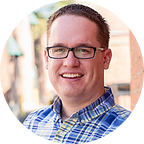Know enough to find the gaps
As I’m reading and learning, I try to spend a lot of time finding where the gaps are in my knowledge. There are lot of them, to be sure, but some stay hidden quite well. Those are usually the result of an area that I’m not very familiar with, so I don’t know where the gaps are. If I’m not careful, that can lead to some illusory superiority, where I think I know more about an area than I really do.
It reminds me of when we were hiring for a position at GreenMellen a long time ago, and a skill needed for this role was the ability to read and write CSS code. In one interview, a woman said “ I’ve never used CSS, but I can learn it this weekend if I need to “. She may have been bragging about her ability to learn, but I think it was really more of a case of illusory superiority — she didn’t know any CSS, so she didn’t have a scale of what was involved in learning it. My CSS skills have always been somewhat decent, but it helps me know enough that it’d take far more than a weekend to really level them up.
In Natalie Nixon’s book “ The Creativity Leap”, she shares a snippet from Ian Leslie’s “ Curious “:
In his book Curious, Ian Leslie explains that curiosity is the result of an information gap. To be curious about something, you must know just a little bit about it. He writes, “In order to feel curious-to feel the desire to close an information gap-you have to be aware of a gap in your own knowledge in the first place.”
I find the best way to find gaps is to learn in broad areas. Knowing even just a little bit about a particular area will give you some insight into what’s required to master it. I’ll go deep in some areas, but I try to keep my reading and podcasts fairly broad so I can better identify those gaps.
Originally published at https://www.mickmel.com on November 30, 2023.
